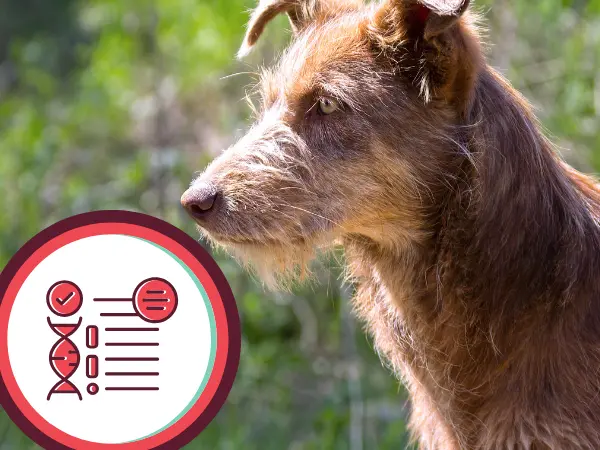Leash training a dog is one of the most important to-dos for every pet parent. Proper leash training for dogs allows you to take your pup to various places — with no yanking, pulling, or lunging. Having a well-behaved pup on a leash also ensures everyone’s safety. With proper leash training, a dog is less likely to chase after distractions and pull away from your grip.
Leash training a dog can also help one better abide by the law. In places like Denver, Colorado, city ordinances require that dogs be kept on a leash (except in designated off-leash areas.) Some states (e.g. Alabama, Arizona, Illinois, Louisiana, & etc) also have strict state-wide leash laws. In these parts of the United States, leash training a dog is an absolute must.
In this complete guide on leash training for dogs, we talk about the essential steps and tips that every pet parent needs to know.
When Should a Dog Be Leash Trained?
A puppy can be leash trained as early as 7 weeks old. However, dogs never stop learning. This means older dogs can be leash trained too — whether they are learning for the first time or refining their skills. In fact, older dogs may be easier to train than puppies because, under the right conditions, they would typically have more self control than puppies.
Whether you’re training a 7-week-old puppy or an older dog, all it takes is patience, positive reinforcement, and gentle training to succeed at leash training a dog.

Tools for Leash-Training Your Dog
Before taking the first step towards leash training for dogs, make sure you have the proper equipment. This includes the following:
- A collar or harness - The market is crowded with restraint options for dogs, ranging from a traditional collar to a martingale to anti-pull devices such as head halters. Many trainers, however, recommend harnesses because they're gentler on dogs' necks.
- A leash - Look for a leash that's 4 to 6 feet long so you can maintain plenty of control. Avoid retractable leashes for training, as they allow a dog in training too much freedom and can even teach them to habitually pull on the leash.
- Treats - Keep your pocket or a pouch filled with small (e.g., pea-sized) treats to reward your pet for progress. If you're trying to manage your dog's weight, opt for the kibble you feed at mealtimes or a low-calorie treat.
Leash Training for Dogs: The Basic Steps
Whether your dog is a puppy or a mature dog that's simply never learned to walk on a leash, you'll want to follow the same training steps:
1. Introduce the Leash for the First Time
Get your dog accustomed to wearing the collar or harness with and without the leash attached. For instance, if you're hanging out at home or in a fenced yard, attach the leash and let the dog run around with it on for a brief period. Give your furry friend a few treats during this acclimatization period to help them associate the leash with positive experiences.
2. Choose a Safe Training Space
Select an area where your dog can be off the leash and focused on training. You might use a room in your house or a fenced yard. This is because you want to teach your dog to pay attention and walk next to you without the leash first.
3. Teach Your Dog To Walk Next to You
Using a treat, along with a cue word or clicking noise, encourage your dog to be at your side. Hold the treat near your leg, where you want your pup to be while walking. When your pet comes to your side, reward them by giving them a treat.
Once your dog understands where you want them to be, walk forward and reward them with treats if they remain by your side. Make sure you're offering the treats at the right place: next to your leg. After your dog gets the hang of this, space the treats out so you're taking increasingly more steps forward before rewarding it.
4. Attach the Leash
Once your pup follows at your side consistently, attach the leash and repeat the process. If your dog is relaxed and focused on you without wandering away or pulling, try walking in a different environment. Go outside if you've been practicing indoors or try walking a short distance down the street.
Keep these early walks short and reward your dog for following you or returning to your side when called.
5. Walk on a Loose Leash
If your dog stays by your side without needing a food reward frequently, try loosening the leash. You might use the treats to teach a verbal cue, such as "heel," to indicate when you want your pet to stay right at your side.
Teach another verbal cue, such as "OK," to indicate when the dog has permission to move away and sniff around. The goal is to give your companion more freedom without allowing it to pull.
6. Practice Makes Perfect
You might have to repeat these steps multiple times for several days or weeks before your dog becomes comfortable and confident walking on a leash. Remember to keep training sessions short so your furry friend doesn't become distracted or frustrated.

Solving Common Problems When Leash Training a Dog
As your dog encounters new places, situations, and seasons, you might experience a few hurdles. Listed below are some advice on how to solve common leash-walking issues:
Pulling on the Leash
If your dog starts pulling or straining against the leash, stop moving. Stand still until your pet returns to your side, resisting the urge to yank on the leash or pull them toward you. When your pup does return, reward them with a treat or by continuing the walk. If your dog has a strong tendency to pull, consider reaching out to your vet for a behavioral consultation.
Note: Though products like head halters and no-pull harnesses are available, these can be dangerous when misused, fitted wrong, or used too long. By scheduling a behavioral consultation, pet parents can save time and address any behavioral issues without guesswork.
Barking
Some dogs bark when they pass other ones while walking. Stay one step ahead of this problem by using a treat to get your dog to focus on you before they have a chance to bark. At the same time, move away from the oncoming pup to increase the space between the two.
The goal is to get your pet to turn its attention to you in anticipation of a treat when it sees another dog.
Lunging
Some dogs also lunge at distractions like other pets, cyclists, and cars. Use the same tactic as you would with barking to correct this behavior. Create distance between your pup and whatever they might lunge at, and offer a treat before your pup can react.
Final Thoughts on How to Leash Train a Dog
That wraps up our guide on leash training a dog. Just follow these tips and you’ll soon have a well-behaved pup to take with you to dog-friendly restaurants, dog parks, and more.
If you have questions about your dog's behavior or care or about how to leash train a dog, contact your local veterinarian.
Sploot Veterinary Care provides all-in-one veterinary care, with primary care, urgent care, and emergency vet services all under one roof! We have multiple vet clinics in Denver, Chicago, and Colorado Springs.
Book an appointment online or through the Sploot Vets app!






